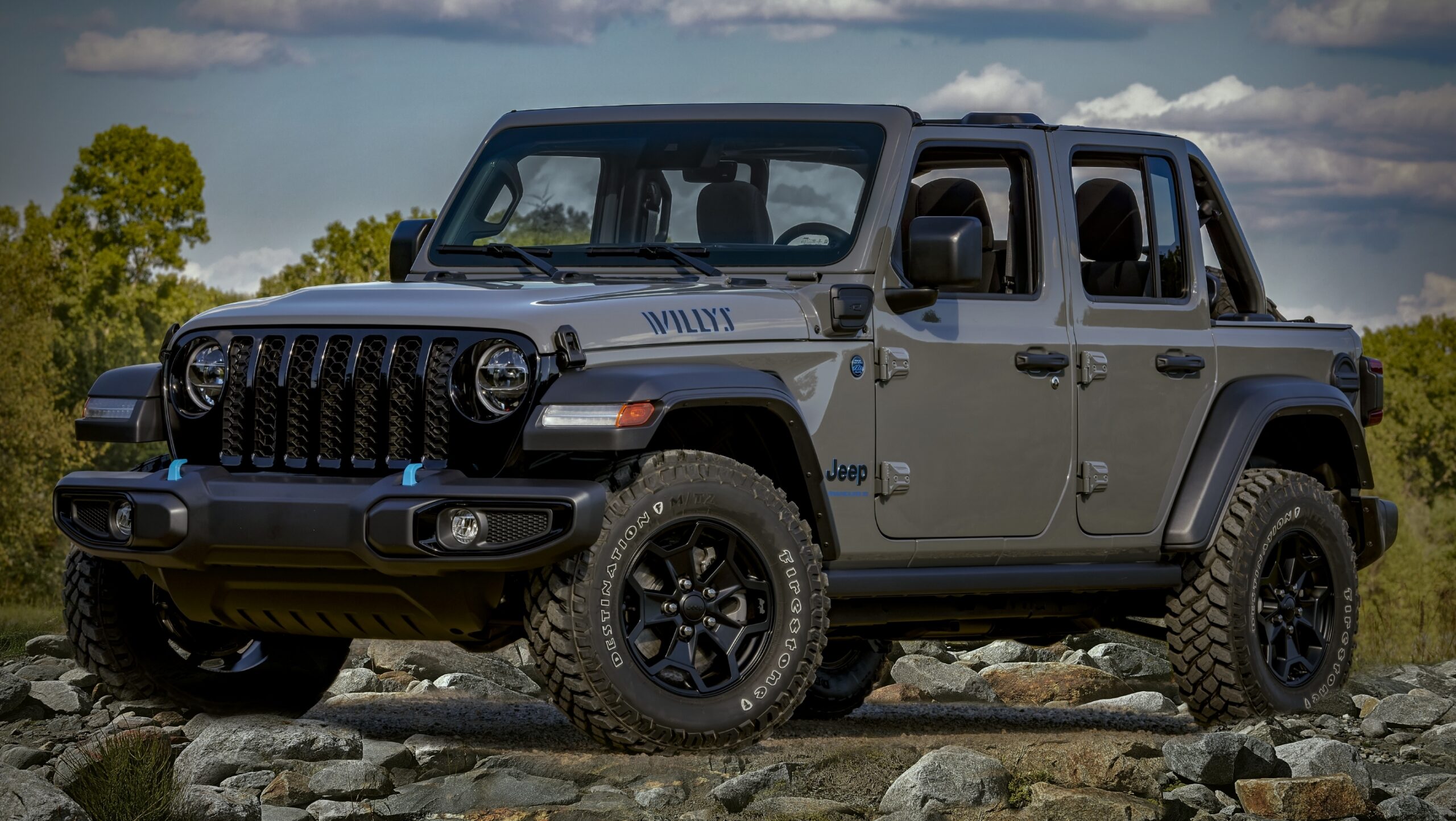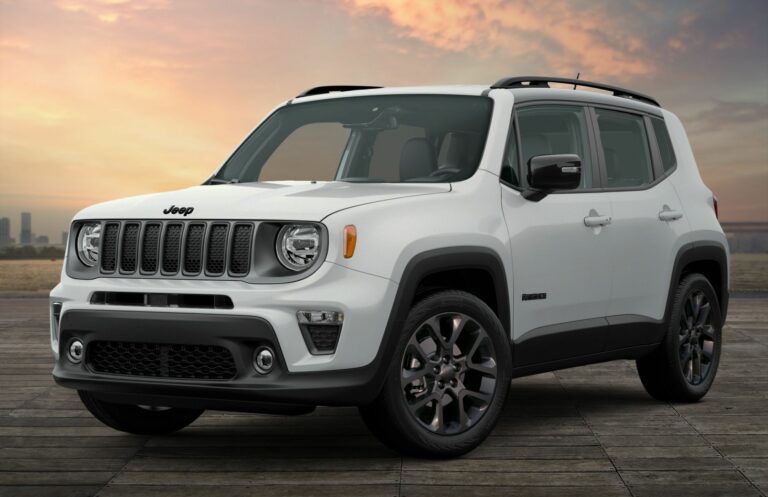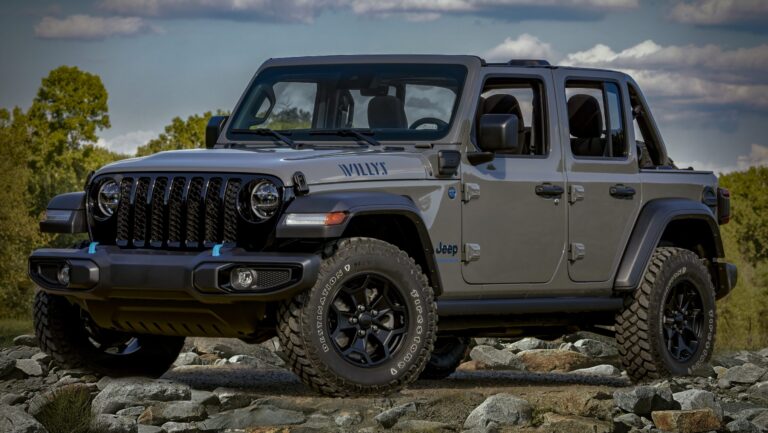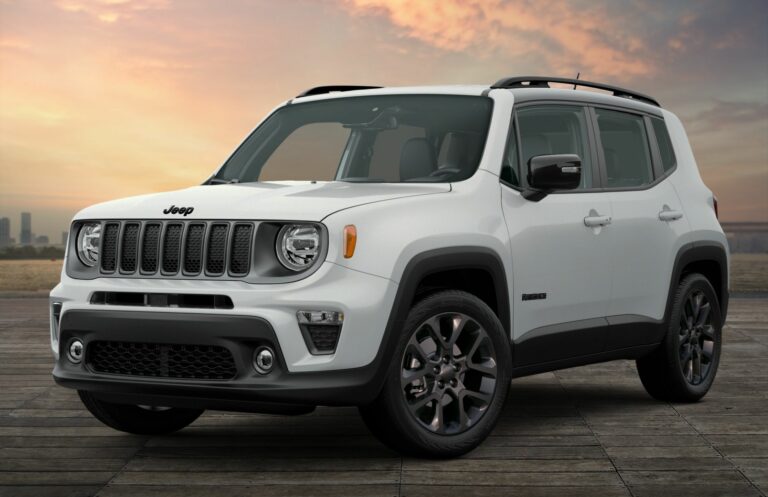Jeep Wrangler 2 Door Wraps: The Ultimate Guide to Personalization and Protection
Jeep Wrangler 2 Door Wraps: The Ultimate Guide to Personalization and Protection jeeps.truckstrend.com
The iconic Jeep Wrangler 2-Door, with its rugged charm and unparalleled off-road capability, is more than just a vehicle; it’s a statement of adventure and individuality. While its factory paint jobs are durable, true enthusiasts often seek to push the boundaries of personalization. This is where Jeep Wrangler 2 Door Wraps come into play. A vinyl wrap offers a transformative solution, allowing owners to dramatically alter their vehicle’s appearance, protect its original paint, and even enhance its resale value, all while maintaining the flexibility to revert to the factory look at any time.
This comprehensive guide will delve into every aspect of wrapping your 2-door Wrangler, from understanding the benefits and types of wraps to navigating the installation process, maintenance, and crucial considerations for achieving a stunning and long-lasting finish.
Jeep Wrangler 2 Door Wraps: The Ultimate Guide to Personalization and Protection
Why Wrap Your 2-Door Wrangler? Unveiling the Benefits
Opting for a vinyl wrap over a traditional paint job offers a compelling array of advantages for the 2-door Wrangler owner:
- Unparalleled Personalization and Aesthetics: The most immediate benefit is the ability to achieve virtually any look imaginable. From vibrant color changes in matte, satin, or gloss finishes to intricate custom graphics like camouflage, topographical maps, or even textured wraps that mimic carbon fiber or brushed metal, wraps allow for a level of customization that paint simply cannot match. This transforms your Wrangler into a unique reflection of your personality.
- Superior Paint Protection: A high-quality vinyl wrap acts as a protective shield against the elements. It guards your original paintwork from stone chips, minor abrasions, UV damage, tree sap, bird droppings, and environmental contaminants. This is particularly valuable for a vehicle like the Wrangler, which is often subjected to harsh off-road conditions.
- Preservation of Resale Value: By protecting the factory paint, a wrap helps maintain the vehicle’s original finish in pristine condition. When it comes time to sell, removing the wrap reveals an unblemished paint job, which can significantly increase the resale value and appeal to potential buyers.
- Cost-Effectiveness vs. Paint: While a full wrap is an investment, it is often significantly less expensive than a professional, high-quality custom paint job, especially for unique colors or finishes. This makes extreme customization more accessible.
- Temporary and Reversible: Unlike paint, a wrap is not permanent. It can be safely removed by a professional without damaging the underlying paint, allowing you to change your vehicle’s look as often as you desire or restore it to its original state.
- Durability and Low Maintenance: Modern vinyl wraps are designed to be durable, typically lasting 5-7 years with proper care. They are relatively easy to maintain, requiring simple hand washing with pH-neutral soap, similar to traditional paint.

Types of Wraps for 2-Door Wranglers: A Spectrum of Style
The world of vinyl wraps offers a diverse palette of options, each catering to different aesthetic and protective needs:
- Full Color Change Wraps: These are the most popular, completely transforming your Wrangler’s exterior color. They come in a vast range of finishes, including:
- Gloss: Mimics a factory paint shine, offering a sleek, polished look.
- Matte: Provides a non-reflective, sophisticated, and aggressive appearance.
- Satin: A luxurious finish that sits between gloss and matte, offering a subtle sheen.
- Metallic & Pearlescent: Infused with metallic flakes or pearl pigments for dynamic light reflection.
- Chrome: The most eye-catching, high-gloss, mirror-like finish, often used for accents.
- Textured: Simulates materials like carbon fiber, brushed aluminum, or even leather.

- Custom Graphic Wraps: For those who truly want to stand out, custom graphic wraps allow for digital printing of any design, image, or pattern directly onto the vinyl. This includes popular options like camouflage, topographical maps, abstract art, business branding, or even photographic scenes.
- Partial Wraps: If a full color change isn’t desired, partial wraps offer targeted customization. Common applications include wrapping the hood, roof, fenders, doors, or specific body panels to create unique two-tone designs or highlight certain features.
- Paint Protection Film (PPF) / Clear Bras: While not a color change, PPF is a clear, durable thermoplastic urethane film applied to painted surfaces. Its primary purpose is to protect the original paint from stone chips, scratches, bug splatters, and other road debris, particularly effective on high-impact areas like the front bumper, hood, and fenders. It’s virtually invisible once applied.
- Vinyl Decals & Stickers: For smaller, localized customization, high-quality vinyl decals can be applied to windows, body panels, or specific accessories, ranging from brand logos to off-road themed graphics.

The Wrapping Process: A Step-by-Step Guide
Successfully wrapping a 2-door Wrangler, especially given its unique body contours and removable panels, requires precision and expertise.
- Preparation is Key (The Foundation): This is arguably the most crucial step. The vehicle must be meticulously cleaned, degreased, and decontaminated to ensure the vinyl adheres perfectly. Any dirt, wax, or oil residue will compromise adhesion. Depending on the complexity, some components like door handles, mirrors, lights, and even the grille or fenders might need to be carefully removed to allow for proper edge wrapping and a seamless finish. Any existing paint imperfections, deep scratches, or dents will show through the wrap, so bodywork repair might be necessary beforehand.
- Measurement and Design: Accurate measurements of each panel are taken to ensure the correct amount of vinyl is ordered and to minimize waste. If a custom graphic wrap is being applied, the design is meticulously laid out and scaled to fit the Wrangler’s dimensions, accounting for curves and cut-outs.
- Printing (for Custom Graphics): If a custom design is chosen, the vinyl is printed using large-format, high-resolution printers. A protective laminate layer is then applied over the print to shield the graphics from UV fading, scratches, and abrasions, enhancing durability.
- Vinyl Application (The Art of Wrapping): This is where the magic happens. The vinyl is carefully positioned over each panel, often with the help of a heat gun to make the material more pliable and conform to curves. Professional installers use specialized squeegees to meticulously smooth out the vinyl, working from the center outwards to eliminate air bubbles and wrinkles. Precise cuts are made around edges, door jambs, and seams, and the vinyl is stretched and tucked to create a seamless, painted-on look.
- Post-Application and Curing: Once the vinyl is applied to all panels, the edges are meticulously trimmed, and post-heating is performed. This involves applying heat to all edges and recessed areas to activate the adhesive and ensure it cures properly, preventing lifting. The vehicle may then need a brief period of "curing" (usually 24-48 hours) where it should avoid washing or extreme temperatures.
DIY vs. Professional Installation:
While DIY wrap kits are available, wrapping a vehicle, especially one with as many complex curves and removable parts as a Wrangler, is incredibly challenging.
- DIY Pros: Cost savings (material only).
- DIY Cons: High risk of bubbles, wrinkles, misalignment, material waste, poor edge finishing, and damage to the wrap or vehicle. Requires specialized tools and significant skill.
- Professional Pros: Expert application, flawless finish, proper material handling, warranty on labor and material, access to high-quality tools and materials, saves time and frustration.
- Professional Cons: Higher upfront cost.
For a flawless, long-lasting result, professional installation is highly recommended.
Choosing the Right Wrap & Installer: Critical Considerations
Making informed decisions is crucial for a successful wrap project.
- Material Quality: Not all vinyl is created equal. Reputable brands like 3M, Avery Dennison, Arlon, Oracal, and KPMF produce high-quality cast vinyls that are more durable, conform better to complex curves, and remove cleanly without leaving adhesive residue. Cheaper calendared vinyls may fade faster, shrink, or be difficult to remove.
- Color and Finish Selection: Spend time researching and viewing actual samples of colors and finishes under different lighting conditions. What looks good online might be different in person. Consider how the color will complement your Wrangler’s existing accessories or off-road build.
- Design Considerations: If opting for a custom graphic, ensure the design is high-resolution and aligns with the Wrangler’s rugged aesthetic. Discuss placement and scaling with your designer.
- Installer Reputation and Experience: This is paramount. Look for installers with specific experience wrapping Wranglers. Ask to see their portfolio, check online reviews, and inquire about warranties on both the material and their labor. A good installer will offer detailed quotes and transparent communication.
- Legal Considerations: While most wraps are unregulated, be aware of any local ordinances regarding highly reflective materials or specific color restrictions, especially if you’re considering police-like liveries.
Maintenance & Longevity of Your 2-Door Wrangler Wrap
Proper care is essential to maximize the lifespan and appearance of your wrap.
- Washing Techniques: Hand washing is preferred using a soft microfiber cloth and pH-neutral, non-abrasive car soap. Avoid automatic car washes, especially those with brushes, as they can scratch or lift the wrap. Rinse thoroughly.
- Avoiding Harsh Chemicals: Do not use petroleum-based cleaners, abrasive polishes, or harsh solvents. These can damage the vinyl and its adhesive.
- Waxing/Sealants: Use wrap-specific sealants or waxes that do not contain petroleum distillates. These products add an extra layer of protection against UV rays and contaminants, enhancing longevity and ease of cleaning.
- Parking/Environmental Factors: Whenever possible, park in shaded areas or use a car cover to protect the wrap from prolonged direct sunlight and extreme temperatures, which can accelerate fading and degradation.
- Expected Lifespan: A high-quality professional wrap, properly maintained, typically lasts 5-7 years, though some premium materials can last longer.
- Repairing Minor Damage: Small tears or scuffs can often be repaired by replacing the individual damaged panel of vinyl, which is far less costly than repainting a section.
Potential Challenges & Solutions
While wrapping is a fantastic option, it’s not without potential hurdles.
- Bubbles/Wrinkles: Primarily a sign of improper installation. Solution: Professional installers use specific techniques and tools to prevent these. If minor, a professional might be able to fix them.
- Lifting Edges: Can occur if the adhesive isn’t properly cured or edges aren’t tucked correctly. Solution: Post-heating and proper preparation by a skilled installer. Address lifting promptly to prevent further peeling.
- Fading/Discoloration: Usually due to poor quality vinyl, lack of UV protection, or prolonged sun exposure. Solution: Invest in premium brands with built-in UV inhibitors and follow maintenance guidelines.
- Damage (Scratches, Tears): Inevitable with off-roading. Solution: High-quality wraps are scratch-resistant but not impervious. Small damage can be patched; larger damage may require re-wrapping the affected panel.
- Cost: A professional wrap is an investment. Solution: Budget accordingly, get multiple quotes, and consider partial wraps if a full wrap is out of budget. Remember, quality often correlates with price.
Jeep Wrangler 2 Door Wraps: Estimated Price Table
Please note: These prices are estimates and can vary significantly based on location, installer reputation, vinyl brand and finish, vehicle condition, and complexity of the wrap (e.g., removable doors, intricate curves of the Wrangler).
| Wrap Type | Material Type / Finish | DIY Cost (Materials Only) | Professional Installation Cost (Material & Labor) | Notes |
|---|---|---|---|---|
| Full Color Change Wrap | Standard Gloss/Matte/Satin | $800 – $1,500 | $2,500 – $4,500 | Most common, complete transformation. |
| Metallic / Pearl | $1,000 – $1,800 | $3,000 – $5,000+ | Adds depth and shimmer. | |
| Textured (Carbon Fiber, Brushed) | $1,200 – $2,000 | $3,500 – $6,000+ | Unique tactile and visual appeal. | |
| Chrome | $2,000 – $3,500+ | $6,000 – $10,000+ | Highly reflective, very difficult to install, often higher material cost. | |
| Custom Graphic Wrap | Digital Print (Camo, Topo, Art) | $1,500 – $3,000+ | $3,500 – $7,000+ | Price varies greatly by design complexity, print quality, and coverage. |
| Partial Wraps | Hood / Roof / Fenders | $100 – $400 (per panel) | $300 – $1,000 (per panel) | Great for accents or two-tone designs. |
| Door Inserts / Accent Pieces | $50 – $200 | $150 – $500 | Smaller details, interior elements. | |
| Paint Protection Film (PPF) | Clear Bra (Front Bumper, Hood) | $300 – $700 | $800 – $2,000+ | Invisible protection, usually on high-impact areas. |
| Full Vehicle PPF | $2,000 – $4,000+ | $4,000 – $8,000+ | Ultimate paint protection, premium product. |
Note: DIY costs assume you have the necessary tools (heat gun, squeegees, knives) or factor them into your budget.
Frequently Asked Questions (FAQ) about Jeep Wrangler 2 Door Wraps
Q1: How long does a Jeep Wrangler wrap typically last?
A1: A high-quality vinyl wrap, professionally installed and properly maintained, typically lasts between 5 to 7 years. Factors like material quality, exposure to harsh elements (sunlight, extreme temperatures), and washing habits can influence its lifespan.
Q2: Can I wash my wrapped Jeep Wrangler like normal?
A2: Yes, but with care. Hand washing with a soft microfiber cloth and pH-neutral car soap is recommended. Avoid automated car washes with harsh brushes, pressure washers too close to the surface, and abrasive cleaners or waxes.
Q3: Does wrapping damage the original paint?
A3: No, when applied correctly to a factory-finished paint job in good condition and removed properly by a professional, a vinyl wrap should not damage the underlying paint. In fact, it protects it. Issues usually arise if the paint was already damaged (e.g., rust, clear coat failure) or if the wrap is removed improperly.
Q4: Is a wrap cheaper than a paint job for my Wrangler?
A4: Generally, yes, for a custom or high-quality finish. A good custom paint job can cost anywhere from $5,000 to $10,000+ depending on complexity and quality, whereas a full professional wrap typically ranges from $2,500 to $6,000 for a 2-door Wrangler.
Q5: Can I remove the wrap myself?
A5: While technically possible, professional removal is highly recommended. Installers use specialized tools and techniques to heat the vinyl and pull it off cleanly without leaving adhesive residue or damaging the paint. DIY removal can be tedious, leave sticky residue, or potentially scratch the paint if not done correctly.
Q6: What’s the main difference between a wrap and paint?
A6: The primary difference is permanence and reversibility. Paint is a permanent chemical bond to the vehicle’s surface, while a wrap is a removable adhesive film. Wraps offer more design versatility, paint protection, and are often more cost-effective for custom looks.
Q7: Will a wrap cover rust or dents on my Wrangler?
A7: No. Vinyl wraps are very thin and conform to the vehicle’s surface. Any existing rust, dents, deep scratches, or paint imperfections will show through the wrap. For the best results, the vehicle’s body should be in excellent condition, with any damage repaired, before wrapping.
Conclusion
Jeep Wrangler 2 Door Wraps offer an incredible avenue for personal expression, transforming your rugged off-roader into a unique masterpiece that stands out from the crowd. Beyond aesthetics, they provide a vital layer of protection for your original paint, safeguarding its condition and preserving resale value. While the allure of DIY might be tempting, the complexity of the Wrangler’s design and the need for a flawless finish strongly advocate for professional installation.
By understanding the types of wraps available, the meticulous process involved, and the proper maintenance, you can ensure your wrapped Wrangler turns heads for years to come. Whether you’re aiming for a stealthy matte black, a vibrant custom graphic, or simply invisible paint protection, a well-executed wrap is an investment that enhances both the look and longevity of your beloved 2-door Jeep Wrangler. Embrace the adventure, and let your Wrangler reflect your unique spirit!






